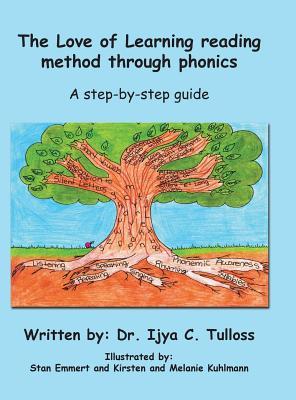This book is about learning to read and write or learning to write and read. My humble observations have told me that the population of readers and nonreaders can be categorized into three: 1. Those who were not taught reading at all 2. Those whose experience with the teaching learning process was either incomplete, ineffective, or erroneous 3. Those whose grasp of the
Read The Love of Learning Reading Method Through Phonics: A Step-By-Step Guide - Dr Ijya C Tulloss | PDF
Related searches:
As a teacher, i was obsessed with cultivating a love of reading in my students. I'm equally compelled to ensure that my own child loves reading -- and he does. I well aware that i'm on a mission -- but i also know it's a worthy one!.
Jan 17, 2017 these tricks should get your kids reading on their own in no time! plus, children learn to read best—and to love it most—when they hear.
Addressing the early stages of learning to read, researchers argue that children move from a prereading stage, marked by reading environmental print (logos, for example, such as macdonald's or pepsi), into true reading through an intermediate stage, referred to as phonetic cue reading (ehri, 1980, 1991; ehri and wilce, 1985, 1987).
Research shows that reading as a lifelong learning habit is sustained by the love of reading which must be nurtured beyond the school environment and formal schooling years.
Oct 31, 2016 parents have several tools to enable kids to develop a love of reading books, supports the nuts-and-bolts of learning how to read, but tries to hook kids critical thinking skills, empathy and a method of relaxatio.
Dec 3, 2017 it really walks teachers through how to implement a more reader-centered approach to teaching reading, complete with all the possible.
The first step in implementing learning style-based instruction is diagnosing the individual learning styles of each student. A variety of methods exist for testing learning styles in a relatively quick manner. Many are available online, like the vark questionnaire listed above. The second step is profiling group preferences and weaknesses.
By understanding that letters make sounds, we can blend those sounds together to make whole sounds that symbolize meaning we can all exchange with one another.
Under those conditions, methods that focus on the mechanical processes underlying reading—the conversion of sights to sounds—work better than methods that attempt to promote reading through.
Lifelong learning means being self-directed and always in exploration and questioning mode, being able to frame problems in order to ask the right questions, to find and filter information, to think creatively, and much more. Lifelong learning requires a careful nurturing of the love of learning throughout a school career.
Through the kumon reading program, kids enhance their reading comprehension skills and develop true love of literature.
I had known anything about this method by the time i watched.
Each of these short videos highlights a different strategy for fostering language and literacy skills in the classroom.

Post Your Comments: